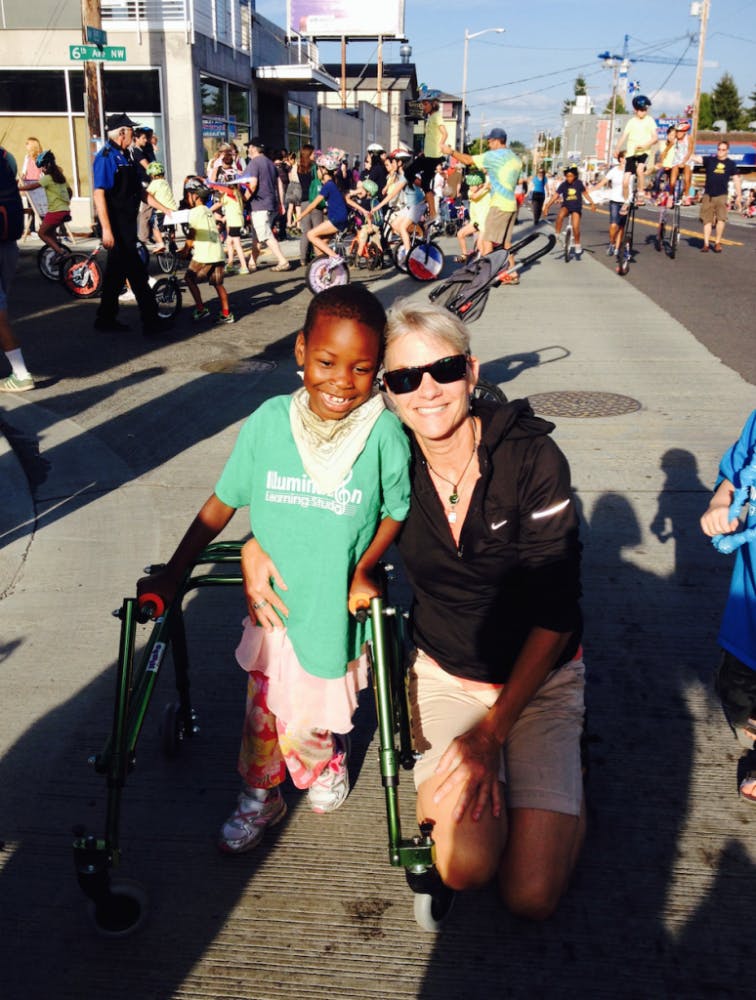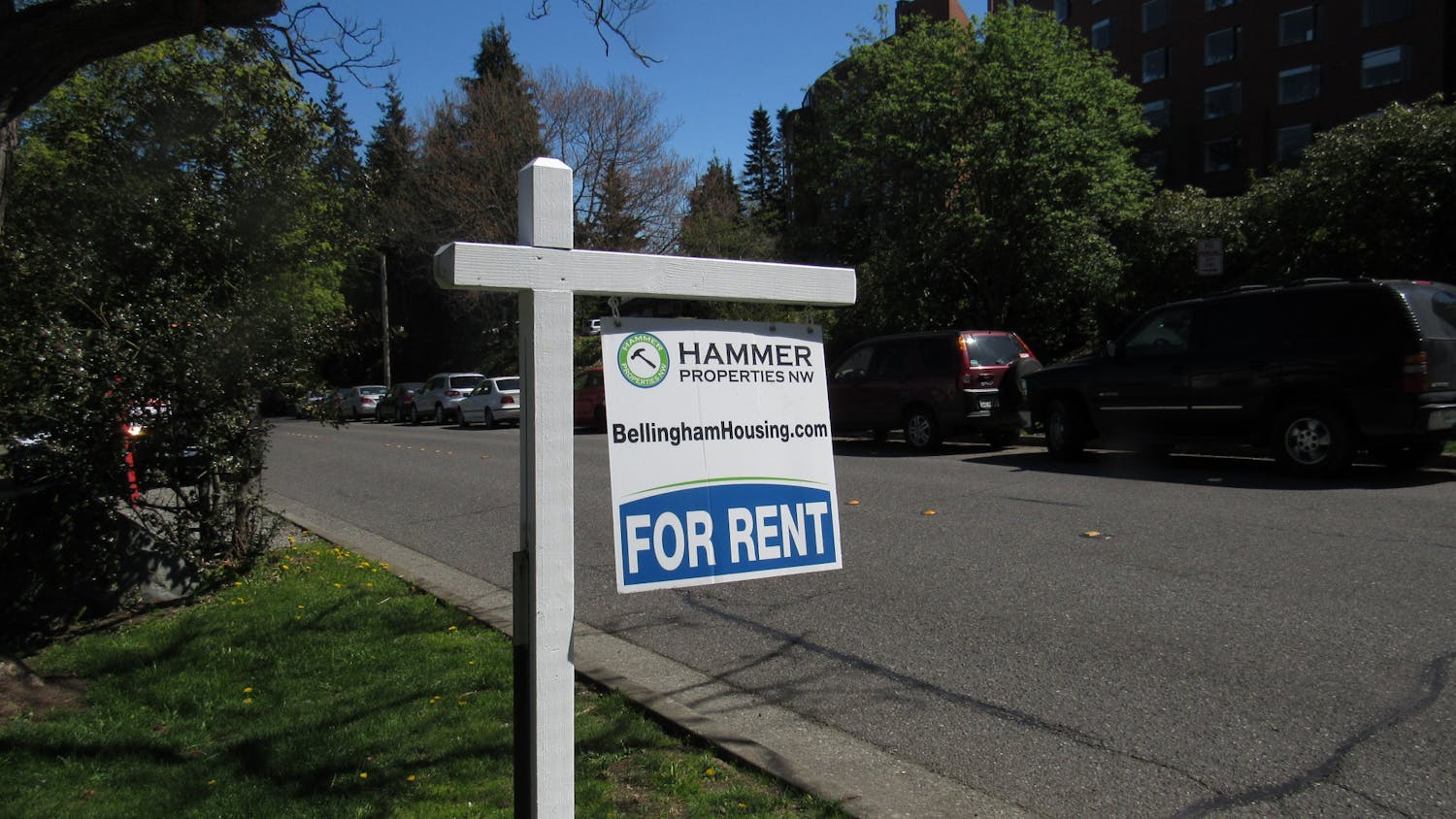
Large-scale problems such as the loose bricks and older buildings are difficult to tackle, Martig said. The bricks can routinely be replaced, but the geological placement of Western’s campus is the real source of the issue.

Andy Bach, a professor of environmental geography, said Western was built over an old lake bed. As a result, the bricks are constantly shifting and sinking. But replacing or renovating a building is not cheap or quick.
Western lacks the funding to sufficiently address issues of this scale, Martig said. In 2016, Western requested $6.7 million from the state of Washington for elevator preservation and ADA upgrades for its 2017-19 budget. However, Western only received $3.2 million, according to the capitol budget request comparison sheet. Western’s Director of Communications and Marketing Paul Cocke said it’s not unusual to receive partial funding for improvements on campus.“Basically, what the ADA requires is minimal. It’s not state of the art, it’s minimal. You have doors that aren’t automatic, you have an elevator that goes to some of the floors, you have one or two bathrooms that you have access to, and it’s like, ‘We’re good to go.’”
Candice Styer, Western professor
Cocke explained that while Western didn’t receive the full amount of requested funding, some improvements under the 2015-17 budget are still underway. These improvements include upgrades to the west elevator in Wilson Library and two elevators in Parks Hall.
The funding received for the 2017-19 Americans with Disabilities Act upgrade budget will be used toward upgrades to elevators in the Environmental Studies building, Morse Hall, the Wilson Library south elevator and the Biology Building elevators.
Western compiled a request for additional funding for upgrades in Bond Hall, the Fine Arts building, the Engineering Building and Bond Hall, Cocke said.
In addition, Cocke said the $1.5 million Western received for access control under the 2017-2019 budget will be used to enhance the existing electronic door system by implementing new software. In the future, Western will request funding for upgrading interior doors and to add electronic access to a number of exterior doors.
Martig attended a lobby day in Olympia last month, where she and several other students advocated for more government funding for Western directed to improving accessibility on campus.

Newer buildings like the Sam Carver Gymnasium and the Wade King Student Recreation Center are more easily accessible, Martig said. However, Osadchuk added that even these buildings can pose physical accessibility challenges.
Osadchuk said the newly renovated Carver Gym still presents barrier access issues. The access buttons that automatically open the doors are too narrow, she said. This is too small a target for some, especially for people who use wheelchairs or service dogs, such as Osadchuk herself. The access buttons which are situated on grey doors are grey as well, and lack enough contrast to be easily visible, she said.
Candice Styer is a Western professor whose expertise is in the area of autism, transition services and behavior management. She typically teaches these subjects within Western’s graduate teaching program. However, she currently instructs an undergraduate course on disability and the media.

While Western’s disability resource accommodations are usually effective, the physical accessibility of campus could be improved, Styer said.
Styer is the mother of a nine-year-old girl who lives with cerebral palsy. When bringing her daughter to campus, Styer has experienced firsthand some of the physical accessibility issues that it presents.
For example, Styer and her daughter ran into difficulty entering the Wilson Library when they found that one of the wheelchair accessible entrances was locked. Styer also highlighted inaccessibility issues within the Viking Union, where a key is required to access certain floors via the elevator.
“As able-bodied people, we don’t think about that. I think about it now because I have this experience that’s very personal,” Styer said.
Western is required by law to be compliant with the Americans with Disabilities Act, which sets physical accessibility standards into place. However, the act isn’t all-encompassing, Martig said. For example, Western’s Ridgeway dorms have no elevators and are thus exclusive in their accessibility, she said.“It’s not even a matter of living there, what if you want to go visit a friend there?” Styer said.
The lack of elevators within the Ridgeway dorms is legal due to the existence of ADA-compliant dorms on Western’s campus.

However, the Ridgeway dorms continue to pose issues for students with disabilities who must request alternative dorms, or who simply want to visit an able-bodied friend who lives in these dorms. They are also a problem for students who have injuries and struggle to access their rooms.
“Basically, what the ADA requires is minimal. It’s not state of the art, it’s minimal. You have doors that aren’t automatic, you have an elevator that goes to some of the floors, you have one or two bathrooms that you have access to, and it’s like, ‘We’re good to go,’” Styer said.
Martig said a necessary component of ensuring the physical accessibility of Western’s campus is that universal accessibility be kept in mind when new construction or renovation is taking place. Universal accessibility is a concept which strives to make buildings and environments open to everyone, with or without disabilities.
Universal accessibility needs to be implemented in order to ensure not only physical accessibility, but also to events and organizations, in order to create an inclusive community, Osadchuk said.
The Associated Students has a checklist they follow when planning events on campus in order to make them open to all members of Western’s community, Martig said. However, this list is not foolproof, Osadchuk said, referencing events in the past the AS has planned in non-accessbile rooms.
“There needs to be a cultural shift toward seeing students with disabilities as people who just move about the world in different ways."
Lisa Osadchuk, Western outdoor recreation major and former administrative coordinator for AS Disability Outreach Center
While universal accessibility is not always completely attainable, it needs to be inherently built into event planning, and not just an afterthought, Osadchuk said. It’s easier on everyone to ensure the highest accommodation standards before the fact, she said.
In Styer’s class, she and her students often discuss the way that the world and the media represent people with disabilities. Oftentimes they are portrayed from a medical standpoint, which implies that they’re broken or that there’s something wrong with them. This perception can lead to discrimination against people with disabilities.
Instead, Styer said we need to use a social model, which asserts that if we make accomodation with a universal design, people’s lives wouldn’t seem so hard.
“It’s a different lens to put on, and unfortunately most people don’t wear that lens,” Styer said. “We need to look at things from a universal design perspective. But I don’t think that we can do that until we look through the lens of accessibility and how that looks for people who may have limited mobility, or who are visually or hearing impaired.”
Both Martig and Osadchuk emphasize the importance of realizing that students with disabilities are just like any other student. Everyone who attends Western deserves the access to the activities and facilities offered on campus without worrying about access barriers, Osadchuk said.
“There needs to be a cultural shift toward seeing students with disabilities as people who just move about the world in different ways,” Osadchuk said.
If you’ve experienced a lack of accessibility on campus and want to share your story, email westernfrontonline@gmail.com




